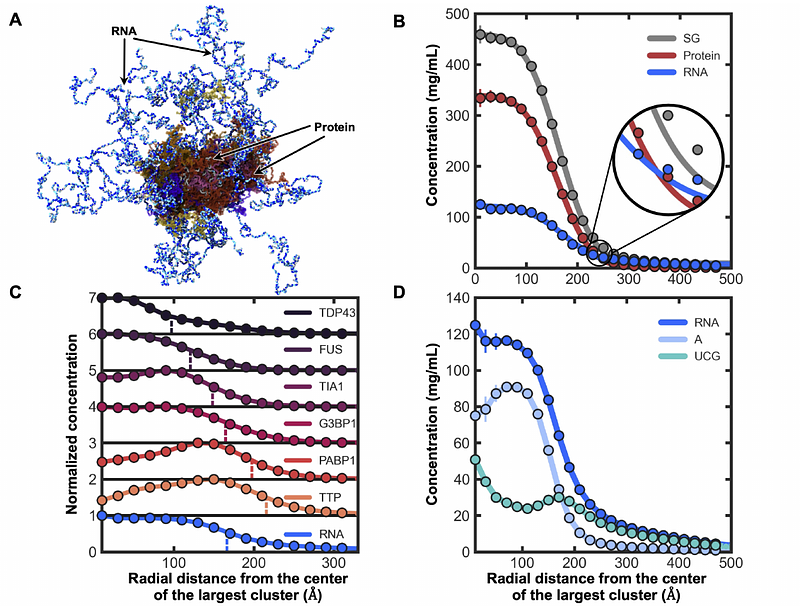Coarse-grained Modeling of Stress Granule Structure and Dissolution with Small-molecule Compounds

Coarse-grained Modeling of Stress Granule Structure and Dissolution with Small-molecule Compounds
Kaplan, J. L.; Webb, M. A.
AbstractStress granules are biomolecular condensates composed of RNA and proteins that form in response to stress; their dysregulation is implicated in neurodegenerative diseases. In this study, we develop a minimal stress-granule model, comprised of RNA and six key proteins associated with neurodegenerative conditions, and study its characteristics using coarse-grained molecular dynamics simulations. We find that RNA is essential to form stable condensates in these biopolymer mixtures, while underlying protein-protein interactions result in heterogeneous, multiphasic architectures. Inspired by therapeutic applications, we then challenge the stability of these condensates in the presence of twenty distinct small molecules. Simulation-derived properties are used to effectively classify compounds as \"dissolving\" or \"non-dissolving,\" in strong agreement with experimental findings. Further analysis suggests that dissolving compounds disrupt stress granule structure by intercalating with RNA and inducing intra-condensate mixing. These insights advance understanding of stress granule stability and demonstrate modeling strategies for screening of therapeutic candidates.